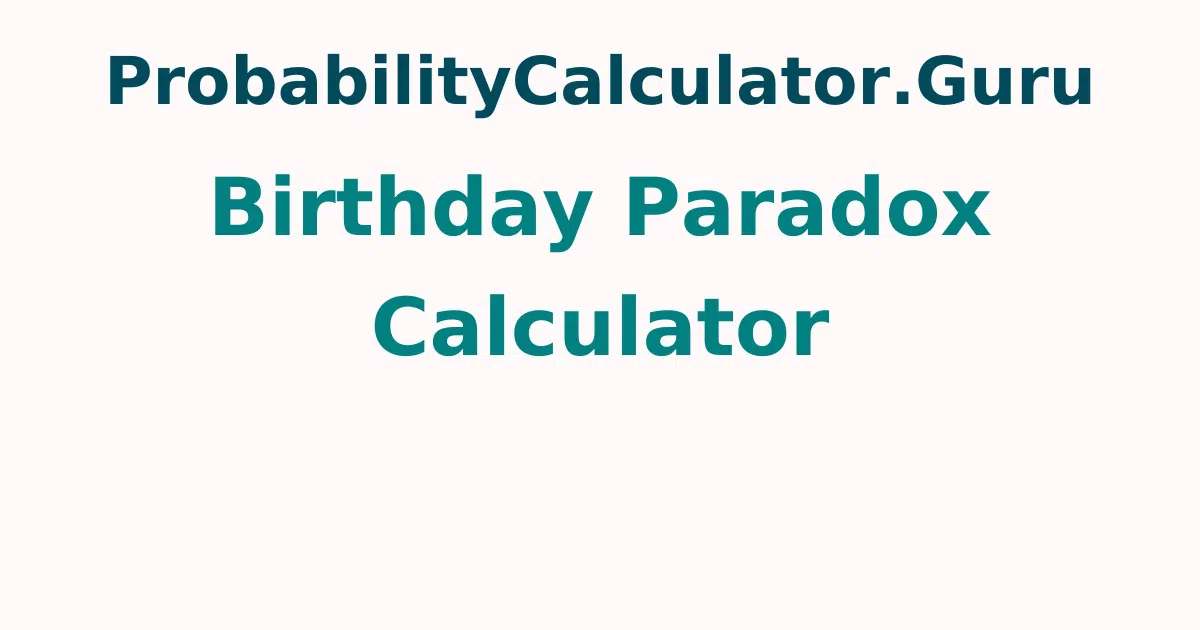Birthday Paradox Calculator
Created By : Vaibhavi Kumari
Reviewed By : Rajashekhar Valipishetty
Last Updated : Mar 19, 2023
The Birthday Paradox Calculator is useful to determine the probability of at least two persons having same birthday in a group. Give the number of people in the group as input and hit the calculate button to avail the probability of at least two sharing a birthday as answer in a less amount of time.
Define Birthday Paradox - Birthday Paradox Formulae
The birthday problem is the probability that, in a set of randomly selected individuals, at least two of them share a common birthday. It was first discovered by an english mathematician who is specialized in number theory. It is used in cryptographic attack called the birthday attack.
The formulas used in different scenarios to decide the probability of birthday paradox.
Probability that one or more persons share same birthday p(n) =1-p-(n)
Probability that birthdays of n persons are different p-(n) = 365!/365n(365-n)!
How to get 50/50 Chance?
- The probability of 2 persons having different birthday is P(A) = 364/365 = 0.997
- Using this formula, we can calculate the number of possible pairs in a group = people * (people - 1) / 2.
- Raise the probability of 2 people not sharing a birthday to the power pairs i.e P(B).
- Now, we have the probability of no one having a common birthday i.e P(B). So, find chance of atleast two people celebaring on the same date i.e. P(B'). Since both of them are complementary events their probabilities sums up 1 so subtract P(B) from 1 i.e. P(B') = 1 - P(B)
FAQ’s on Birthday Paradox Calculator
1. How do you calculate birthday paradox?
Give number of people in a group details in the input box of the calculator to know the probability of at least two people in that group shares their birthday.
2. What is the probability that 2 persons have same birthday?
The probability of having 2 persons same birthday is 1/365.
3. Is birthday paradox true?
In probability, the birthday paradox finds the probability of at least two shares a birthday in a set. The birthday paradox is that, counterintuitively, the probability of a shared birthday exceeds 50% in a group of only 23 people. It appears wrong but it is true.
4. What are the assumptions made to calculate the Birthday Probabilities?
The assumptions made in Birthday Paradox calculation is that birthdays are equally distributed over an year and leap years are ignored.
